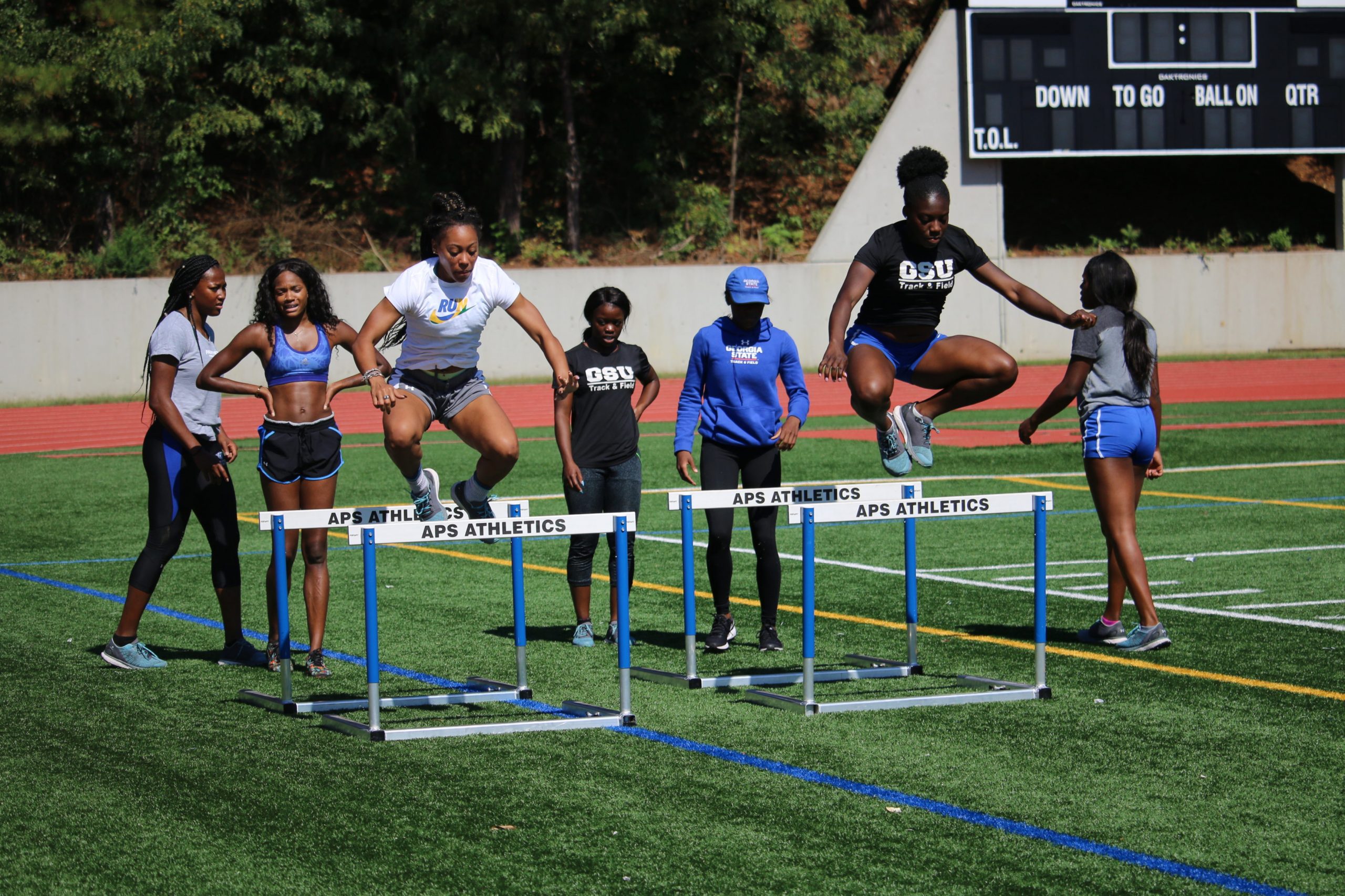
Not many things are more satisfying than working a job you truly love. The Georgia State track & field team must alter their diet to do what they love. Being an athlete in 2017 is a full-time job, which begins with taking care of your body year-round to maximize results.
After all, the body is the source of performances that fans admire, so maintaining a great physique and diet for success should not be shocking. The days of athletes indulging in alcohol and finger foods at bars following games are long gone.
Eating the right foods for runners is “just like putting performance tires on a race car,” according to Assistant Track & Field Coach Kyle Stevenson. No matter what’s under the hood of a car from a NASCAR race, the vehicle will not finish in first place with the spare tires laying in the back of your trunk.
Coach Stevenson is not a registered dietitian, but he is a stickler in regards to his athletes’ recovery following workouts. He recommends his players eat a wholesome variety of the three macronutrients (carbohydrates, protein and fats) to stimulate proper recovery.
Stevenson, the coach for sprints and hurdles prohibits fried foods and frowns upon the consumption of sugary drinks. Rashell Reid, a senior thrower says meal prepping at the beginning of every week helps her stay on track with eating healthy.
Sleeping, eating, relieving stress and even stretching properly are all vital to complete the tasks Stevenson demands on the track. Despite this, in terms of its importance, recovery is often neglected in favor of activities unrelated to sport.
For instance- for the majority of their history teams in the NBA exclusively traveled to visiting cities during the mornings of game days, which enabled players to parley in streets and clubs just hours before departing on flights During the 21st century, NBA teams began to fly players to their destination city only hours after completing a game, believing alcohol consumption had harsh effects on performances and healing.
“I think that hands down, track is maybe top three in most difficult sports in the world because it is solely dependent on your body,” Stevenson declared. “I can not feel 100% but still shoot over 50% [from the field in basketball]. As opposed to, I may not feel 100% and I can’t run all out for a certain distance.”
Once the outdoor track & field season comes to an end in May, student-athletes don’t report back until September. Under their own discipline from June through August, athletes must sustain the level of fitness in which they ended the season in.
Only in his third month at Georgia State, the newly hired Stevenson was not able to compare the shape that the women were in at season’s end to their September form.
However, Stevenson whose last stop was at Saint Martin’s University in Lacey, Washington is highly impressed with the strength and speed of the Panthers in comparison to his previous stints.
Senior Ashlan Rosier said she and her teammates are still improving their strength and speed by hitting the weight room and running longer distances than usual.
The short indoor sprinters who usually compete in 60 meter races are currently running 180, 120 and 90 meters. Long sprinters are running distances of 250 and 150 meters.
Stevenson has the team complete wall drills and push sleds up inclines to practice foot placement technique.
“When technique starts to break down, I will stop a workout because,at that point, it’s a loss of power output,” Stevenson said. “So when the quality goes down, I’ll shut it down and we’ll come back at a later time and do better.”
Despite LaPorsha Wells becoming Georgia State’s first All-American in female track and field, the 2017 season was a down year for both the indoor and outdoor teams. Georgia State return eight seniors and five juniors, which makes the 2018 team extremely veteran heavy.
“In my freshman year, we got second [place in the Sun Belt Conference Championships], but I feel we can be top three [again in 2018] with how many people and the power we have,” Rosier said.
Rosier can contribute to Georgia State’s return to being a podium team. The senior competes in the long jump and 4X400 relay during both outdoor and outdoor meets.
The indoor season begins Jan. 12 in Birmingham, Alabama, at the University of Alabama at Birmingham Invite. Outdoor track & field begins their season in mid-March following the Sun Belt Indoor Championships.
